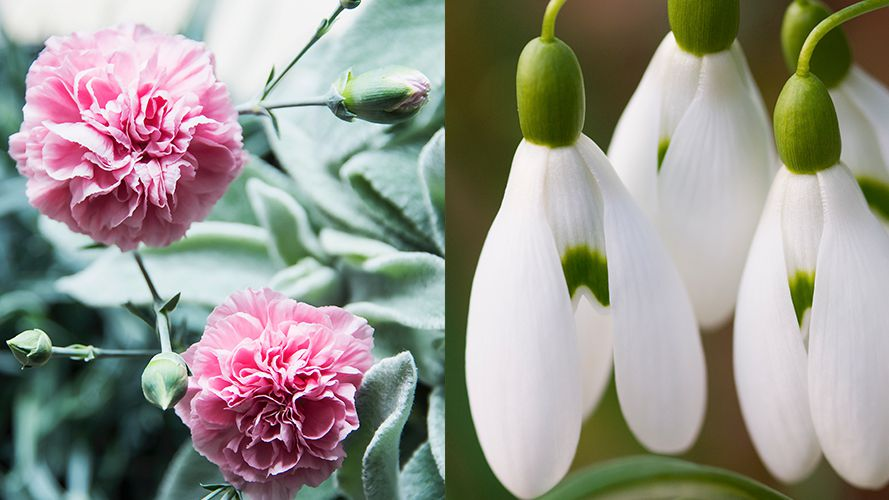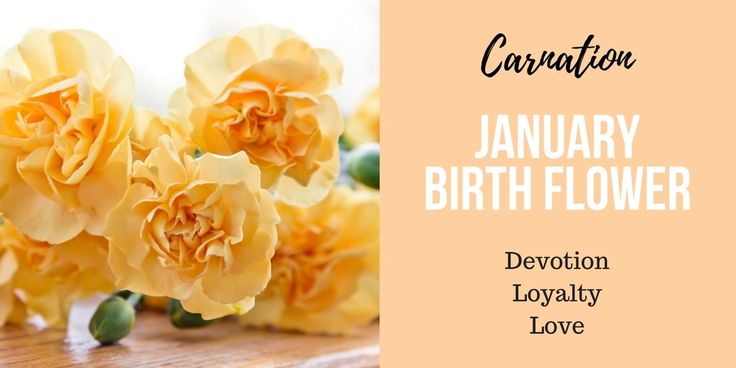The January birth flower is the carnation, a bloom that carries a rich symbolism and offers a vibrant touch to the winter month. Whether you’re celebrating a January birthday or simply interested in learning more about this flower, understanding the significance and varieties of the carnation can add depth to your appreciation. This article explores the characteristics, meanings, and uses of the January birth flower, providing a comprehensive guide for anyone fascinated by this elegant blossom.
What is the January Birth Flower?
The January birth flower is the carnation, known for its ruffled petals and diverse colors. As the official flower for the first month of the year, the carnation embodies qualities such as admiration, love, and distinction. Its history and cultural significance make it a flower of both beauty and importance.
1. Characteristics of the Carnation
- Appearance: Carnations are recognized for their frilled, multi-layered petals that create a ruffled texture. They come in a variety of colors, including pink, red, white, and purple.
- Size: These flowers typically range from 2 to 4 inches in diameter, making them a noticeable and attractive choice for floral arrangements.
- Fragrance: Depending on the variety, carnations can have a light, spicy fragrance, adding a subtle aroma to any bouquet.
2. Types of Carnations
There are several types of carnations, each with its unique features:
- Standard Carnations: These are the most common and are known for their large, vibrant blooms. They are often used in formal arrangements and bouquets.
- Miniature Carnations: Smaller in size, these carnations are perfect for delicate arrangements and can add a touch of elegance to any setting.
- Fringed Carnations: Recognizable by their fringed edges, these carnations add a distinctive texture and are popular in both bouquets and boutonnieres.
Symbolism and Meaning of the January Birth Flower
The January birth flower, the carnation, holds various meanings and symbolism across different cultures. Understanding these can enhance the appreciation of this flower.
1. General Symbolism
- Admiration and Love: The carnation is often associated with deep admiration and enduring love. It’s a popular choice for expressing heartfelt emotions.
- Distinction: The flower’s unique appearance also symbolizes distinction and a sense of being special or outstanding.
2. Color Meanings
The color of a carnation can alter its meaning:
- Red Carnations: Symbolize deep love and affection.
- Pink Carnations: Represent a love that is everlasting and a gratitude for someone’s presence.
- White Carnations: Denote pure love and good luck.
- Purple Carnations: Convey a sense of capriciousness or unpredictability.
3. Cultural Significance
Different cultures attach various meanings to carnations:
- In Western Cultures: Carnations are often used in wedding bouquets and are a popular flower for Mother’s Day.
- In Asian Cultures: They symbolize a love that is eternal and are frequently used in ceremonies and festivals.
Growing and Caring for Carnations
If you’re inspired to grow your own January birth flower, understanding how to care for carnations will help ensure they thrive.
1. Planting Carnations
- Soil: Carnations prefer well-draining soil with a slightly acidic to neutral pH.
- Sunlight: They need full sun exposure to bloom well. Ensure they get at least 4 to 6 hours of sunlight daily.
- Spacing: Plant carnations about 12 to 18 inches apart to allow for proper growth and airflow.
2. Caring for Carnations
- Watering: Keep the soil consistently moist but not waterlogged. Overwatering can lead to root rot.
- Fertilizing: Use a balanced fertilizer every 4 to 6 weeks during the growing season to promote healthy blooms.
- Pruning: Remove spent flowers and dead foliage to encourage new growth and maintain the plant’s appearance.
Uses of the January Birth Flower
The January birth flower can be utilized in various ways, adding beauty and meaning to different occasions.
1. Floral Arrangements
- Bouquets: Carnations are a staple in bouquets for their longevity and vibrant colors.
- Centerpieces: Their striking appearance makes them ideal for creating eye-catching centerpieces for events.
2. Gift Giving
- Personal Gifts: Gifting a bouquet of carnations for a January birthday or special occasion conveys affection and admiration.
- Special Occasions: Use carnations to celebrate anniversaries, weddings, or other significant milestones.
3. Decorative Uses
- Home Decor: Carnations can enhance home decor by adding a touch of elegance and color to living spaces.
- Crafts: Dried carnations are used in various crafts and decorations, including potpourri and wreaths.

Conclusion
The January birth flower, the carnation, is more than just a beautiful bloom. It carries deep symbolism and offers a range of uses, making it a flower of significance and versatility. Whether you’re celebrating a January birthday, planning an event, or simply appreciating floral beauty, the carnation stands out as a symbol of love, admiration, and distinction. By understanding its characteristics, meanings, and care requirements, you can fully enjoy and utilize this elegant flower.



